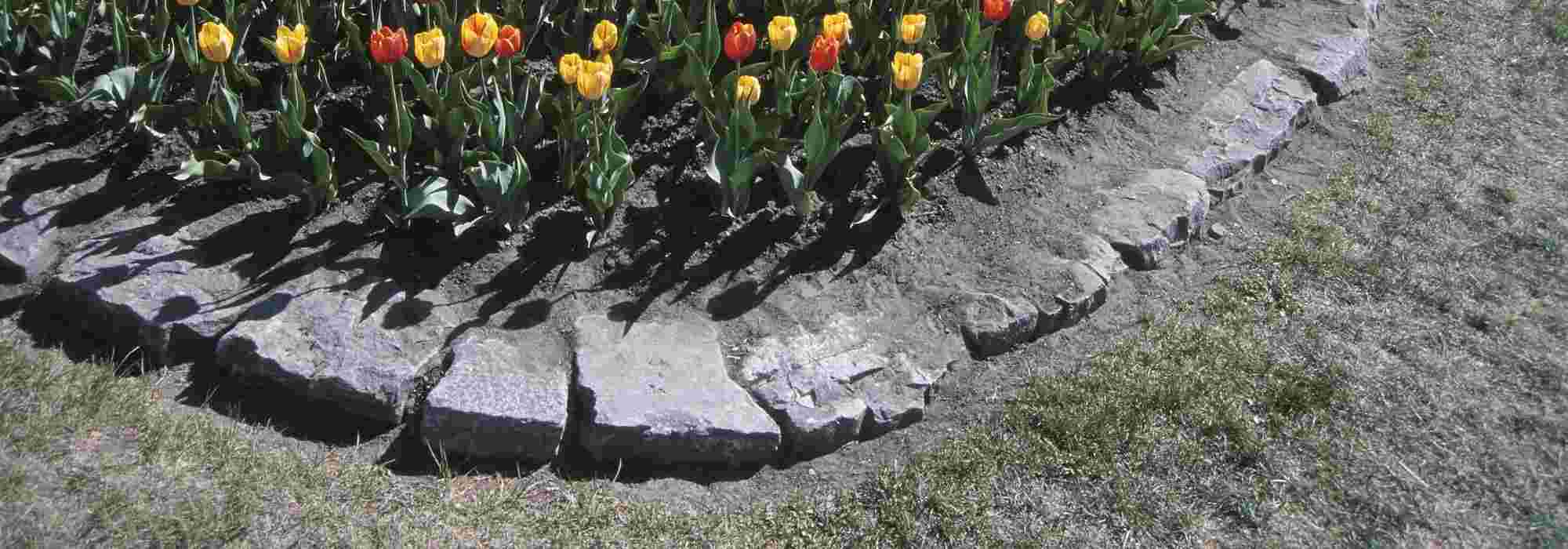
Garden edging: solutions, advantages, disadvantages
Our tips for choosing your flowerbed edging
Contents
Edging is an important element in designing a border. Its uses and functions vary greatly. It can simply serve to define an area, making maintenance and mowing easier. Sometimes the gardener wants to assign it a truly ornamental role. It can then emphasise a composition, reinforce a style or support plants. In any case, choosing can be difficult given the great diversity of materials and shapes available. Whether natural, mineral, synthetic or metal edging, each has advantages and disadvantages you should consider before making your choice. Finally, the chosen style must harmonise with that of your garden. In this article, I offer an overview of the main types of garden edging, with their strengths and weaknesses, and some pointers to help you choose the one that best suits your needs.
Prices quoted are those observed at time of writing and are provided for guidance only.
Wood and bamboo edging: go natural!
A noble material par excellence, wood brings plenty of warmth and a natural feel to your bed and path edges. The choice is quite wide, between large sleepers, boards, rolls or small fences. Wattle panels (most often woven from hazel, chestnut or willow stems) are back in fashion and bamboo edging is also being seen increasingly often.
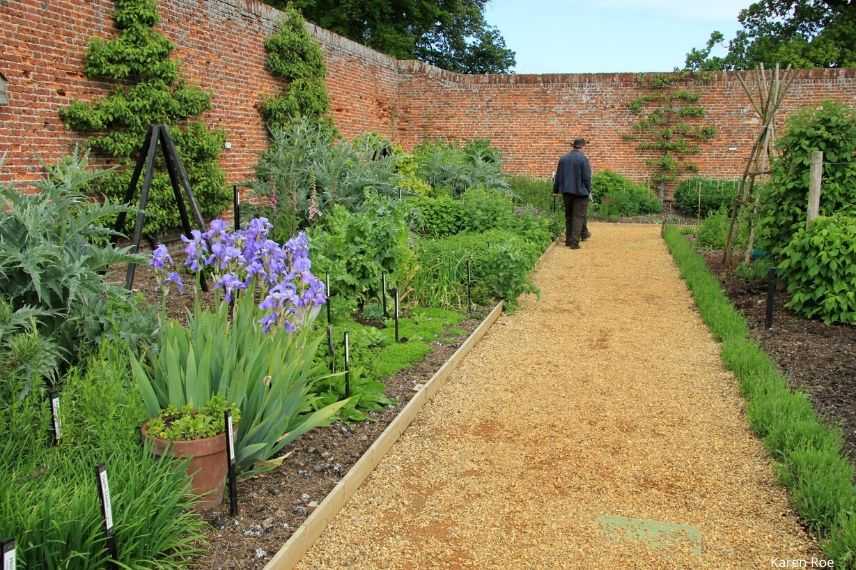
Wood edging
Advantages
- Primarily chosen for their natural style. These materials fit easily into gardens without much risk of poor taste.
- Ready-to-install modules (low fences, wattle panels) are easy to handle and install. Rolls or boards simply need a shallow trench to be partially buried.
- Entry-level models can be inexpensive (around €2.5/m), but prices can rise quickly depending on design and essential oils of wood used.
Disadvantages
- The main drawback of wood is its limited durability over time. Used as edging, it is often in contact with soil (even buried) and eventually breaks down and rots. Certain essential oils (black locust, chestnut and oak, to name a few European essential oils) are naturally more resistant to external aggression, but they still eventually deteriorate.
- Weight of sleepers can be considerable and make them difficult to handle for some gardeners.
Mineral edging: sturdy or stylish
Mineral materials offer ranges with very different prices and finishes. It is indeed difficult to compare an edging made of natural stone with one made of concrete. Usable as raw rock or cut blocks, stone undeniably brings an authentic character to a garden. Today there are reconstituted stone elements that can be hard to distinguish from real stone. To create mineral edgings, you can also opt for pebbles, bricks or paving stones (laid flat or on edge), choose sandstone, or slate and schist, with dark tones whose sheen is highlighted by rain or watering.
Finally, mineral also includes concrete edgings, offered as ‘strips’, straight or curved modules, and some models are even suitable for planting, thanks to cavities integrated into their structure.
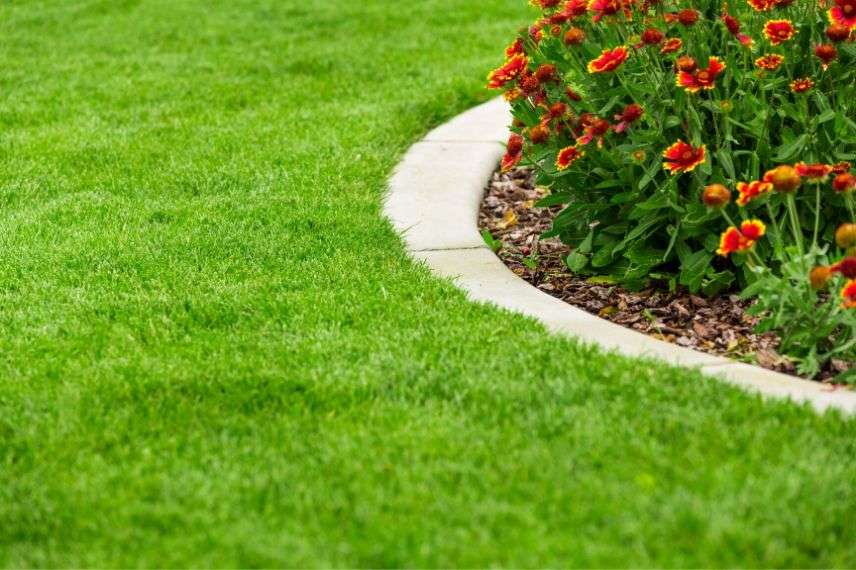
Mineral edging
Advantages
- mineral edgings are the most robust and longest-lasting. They resist weather and, if necessary, trampling.
- some materials produce a very natural, charming finish and are also easy to install
- mineral edgings require no maintenance
Disadvantages
- installation can in some cases be difficult (heavy material, difficult handling, masonry work…), and it is sometimes advisable to call in a professional.
- price can vary widely depending on chosen material, concrete remaining the cheapest (can be found from €2.20 per linear metre).
- masonry edgings require maintaining the same alignment and therefore limit possibilities for change.
- concrete edgings do not always offer an attractive finish and can appear artificial or even unsightly.
Synthetic edging: practical and economical
Synthetic borders offer many appearances and colours. Made from plastic, rubber, PVC or polyethylene, you can find them in undulate or flat shapes, sold in rolls to be partially buried in soil. Others mimic stone or ornate wrought iron and are fixed in soil with stakes.
Advantages
- often inexpensive (from €0.75 per m for most basic models), more sophisticated styles can nonetheless represent a significant expense.
- rot-proof, they resist weather, UV and remain in place for many years
- easy to install, they often only require a hammer or digging a small trench.
Disadvantages
- Their composition itself makes them unnatural to produce, and the finished look often lacks charm. They have an artificial appearance that can sometimes verge on ‘kitsch’.
- depending on shape and price, some can be fragile and brittle.
Metal edging: classic and effective
Metal is often used to make edging for beds or paths. It is declinate in different materials, such as galvanised steel, aluminium, cast iron or wrought iron. Corten steel (or Korten) is a treated steel that produces a stable rust which develops over time into a beautiful brown‑orange patina. As with other materials, models can come as rolls to bury (often secured with stakes) or as modules in modern, retro or even antique shapes. In modern and contemporary layouts, gabions are increasingly used. These are in fact metal cages filled with stones that are frost‑resistant, but the filling can also be declinate with other materials such as wood, pine cones or any other material of choice, bearing in mind lifespan will then be affected. They exist in various sizes (length and height), allowing use in different configurations.
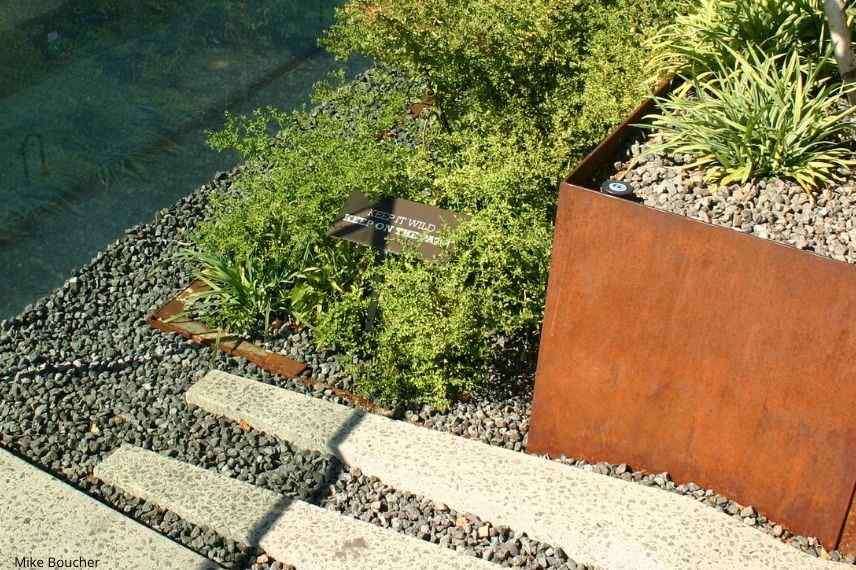
Corten steel edging
Advantages
- depending on how they have been worked, metals offer a choice of shapes and styles that can suit many types of garden, from most romantic to most contemporary.
- treated to withstand weather, metal edgings are durable
- installation can be as simple as for other types of edging (flat blades to bury or modules to simply push into soil, for example) or more complex (in case of gabions, which involve significant handling).
- entry‑level prices are very affordable (from €3 per linear metre for single delimitation edgings) but if opting for Corten or modules with more sophisticated shapes, cost can quickly rise.
Disadvantages
- without appropriate treatment, some metals can oxidise and deteriorate over time.
- some models can be heavy to transport and to handle
- edgings with refined design and forged from quality metal can prove fairly expensive.
How to choose a suitable border?
To separate two distinct areas
A flowerbed to separate from the short grass meadow? A gravel path to frame? Buried edging is ideal. It can be very discreet, protruding from the ground by only a few centimetres, or more decorative, for example when made of wood. Use a material that is more or less rigid depending on whether the area to be shaped has straight lines or curves.
To highlight a flowerbed
Choices here are wide and depend above all on your budget and the style of your garden. Avoid materials that look too artificial as they may jar with the rest of the setting. It would, in my view, be a shame to place basic concrete or plastic edging in a garden with a natural or romantic style, risking spoiling the overall effect. While wood and attractive metal edgings fit well in these types of gardens, a Corten edging is entirely at home in a more modern, contemporary composition.
To edge a raised flowerbed
Because of slope or specific needs of certain plants, it is sometimes necessary to raise a flowerbed to some extent. To prevent soil and mulch tumbling out of the bed, edging is often required. Railway sleepers (timber sleepers) suit this use well, but other materials can fulfil the role, such as mineral edgings (stone, slate…) or synthetic ones (provided they are high enough and not perforated).
To support plants
Edging, beyond its aesthetic function, can also act as a stake, preventing plants in a flowerbed from flopping onto the short grass meadow or into a path. In this case, be chiefly attentive to the appropriate height. Too low, the edging will not do its job and will disappear beneath the plants. Too high, it will hide the plants it is meant to support and overwhelm the bed. You can choose a solid edging, against which plants can recline, or an openwork one to create a sense of transparency.
To make mowing and maintenance easier
Unless keen on using a strimmer, it is difficult to keep neat contours around flowerbeds. Grass quickly reclaims ground, the turf is not well cut at the junction short grass meadow/flowerbed… in short, it does not look ‘tidy’. One solution is to install edging with its top flush with the turf. On one side, the flowerbed and its plants; on the other, the short grass meadow. When mowing, simply roll over the edging so the result looks immediately neater.
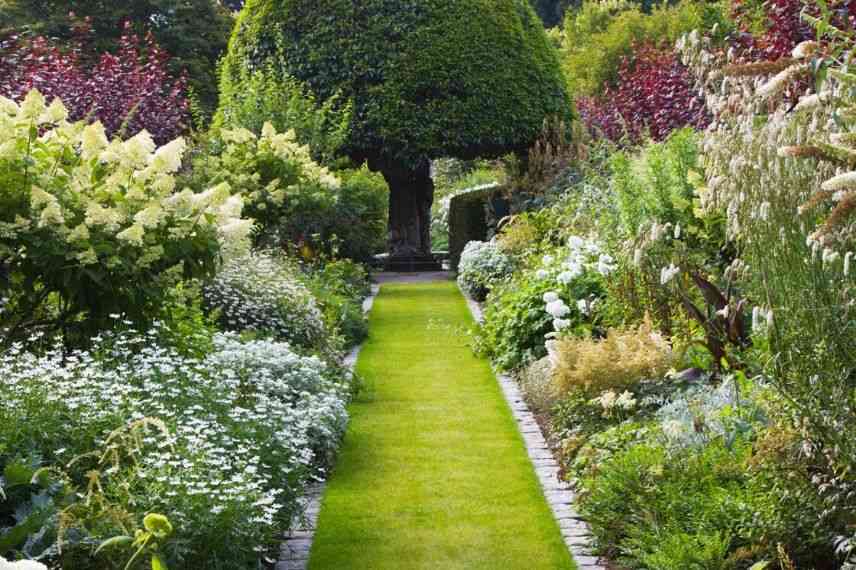
Which edging to choose in the end?
Take time to think it through so you do not regret your choice later. Several criteria should be considered:
- your budget, because depending on style and length to be installed, differences can be substantial
- installation, quick and simple for modules that merely need to be pushed into the ground, but more complex when masonry work is involved. Sometimes a professional is required
- not all materials last over time. Steel can remain decorative for many years, whereas wood decays more or less quickly. You may need to treat, repaint or clean edgings regularly to keep them looking good.
- materials set in mortar imply leaving them in place long-term. If you wish to alter the line or change style, the operation will be more delicate than with other materials
- style is also a determining factor, perhaps the most important to my mind. Trying to be too cheap and/or quick can lead to a very disappointing and non-durable result. Look in magazines, on social media and visit other gardens; you will find examples of what works well and what works less well.
- but maybe you prefer a natural edging, without adding ornaments other than those produced by your plants? If so, discover our article on pruning borders, the one on 7 perennials ideal for borders, as well as our wide selection of plants for borders, including roses, hardy geraniums or even boxwood.
And you, which style of edging do you prefer?
- Subscribe!
- Contents
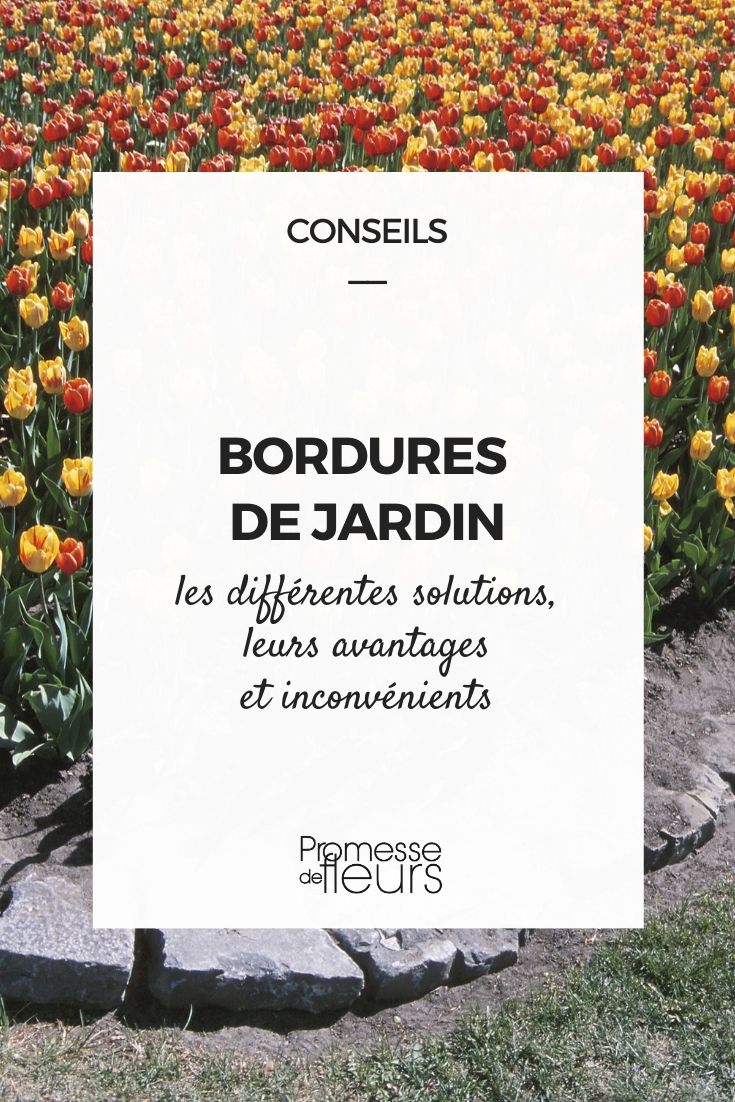
































Comments